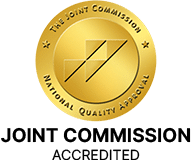Over 4.8 million people reported using cocaine in the past year. The prevailing drug has multiple side effects. One of them is coke nose.
Coke nose occurs in users who snort the narcotics rather than inject or ingest them. Snorting the drug allows the body to absorb ice faster and skips the pathway to the stomach and liver.
The nose is a delicate organ and holds several sensitive tissues that experience irritation after constant coke snorting.
For this reason, coke nose can cause several effects, from a short-term nosebleed to a long-term perforated septum. Stick around to learn more about coke nose, its side effects, signs, and treatments.

Table of Contents
What is Coke Nose?
Cocaine abusers typically snort the drug to induce a more potent and prompt effect. The powder directly enters the users’ bloodstream, invoking a more overpowering high. That said, snorting the powder form of the drug causes multiple health issues identified as “coke nose.”
Effects of Coke on the Nose
Cocaine constricts blood flow to the nose, which is why medical professionals sometimes use it to treat dangerous nosebleeds.
Nevertheless, prolonged use of cocaine can constrict blood flow to your nose resulting in several infections and complications. The reduced blood supply can hinder the oxygenation of your nose cells, eliminating them.
Here are some of the effects of cocaine on your nose below.
Sinus Infections
Since there isn’t much blood flow reaching your nose, immune responses can become compromised, leading to a sinus infection.
In addition, snorting foreign powder into your nasal passageway can introduce a myriad of contaminants. When left untreated, a sinus infection can find its way to your bloodstream and cause a fatal sepsis case.
Lung Infections
Since your nose connects to your lungs, coke nose’s damaging effects can reach your respiratory region.
Your nose is your body’s first line of defense against outside contaminants. If it’s not functioning adequately, your lungs receive these foreign objects. Plus, they can reach other parts of your body, such as your brain.
Saddle Nose
Coke nose can cause physical deformities, such as Saddle nose. The complication causes your nose bridge to deteriorate and collapse.
Due to the excess exposure to foreign objects on your nose’s passageway, the nose’s tissues weaken and rot.
Since there’s little blood flow supplying the region, the inner part of your nose gives out and deforms the smell organ. The condition is common with long-term cocaine abusers.
Septum Issues
The septum is the part that divides your nostrils. Coke nose can eat away at this part of your nose and cause perforations to appear.
Additionally, you may experience a deviated septum, where the septum leans on one side more. In turn, the condition can plug one of your nostrils and affect your breathing.
Hard Palate Complications
The hard palate is the area found on the roof of your mouth, which splits your nasal cavity and mouth region. Coke nose can severely damage your hard palate.
Prolonged use can result in perforations, which affect your voice. Plus, it can cause your food to come out of your nose when eating.
Nosebleeds
Nosebleeds are a short-term effect of coke nose. Although cocaine restricts blood flow to your nose, once the effects wear off, blood flow can overwhelm your blood vessels and cause bursting.
Plus, nosebleeds can also occur from the irritation caused by snorting the toxic drug. It can also result from the increase in nasal pressure when snorting. You may also notice scabs and general redness around the nose region.
Nasal Lining Damage
Our noses aren’t able to handle the constant intake of powder substances. In turn, the nasal lining becomes intensely irritated, and swelling may also occur in your sinus area.
Runny Nose
After your nose experiences irritation and becomes inflamed, your mucus lining expels excess fluids. In turn, your nose gets runny and suffers from blockage and crusting.
Signs of Coke Nose
The signs of coke nose vary depending on how long the user abused the drug. That said, short-term signs of coke nose can be anything from a runny nose, nosebleeds, dryness, and congestion.
Nonetheless, long-term users can suffer from snoring, whistling while breathing, loss of smell, and nasal ulcers.
Healing Coke Nose
Although the short-term effects of coke nose can heal on its own, the long-term ones need medical intervention. Septal, hard palate, and nose bridge perforations need surgical input.
Regulating Infection
Healing nasal infections requires prescribed antibiotics from an assigned physician. Besides that, medicated nasal sprays may cause dryness symptoms to worsen. Instead, you can resort to a saline nasal rinse to help mitigate excess mucus production and dryness.
Plastic Surgery
Reconstructive surgery can help correct the deformities caused by a coke nose. Minor issues usually call for an outpatient rhinoplasty procedure. Meanwhile, large holes in the nasal lining may require a more challenging surgical process.
Some sergeants use tissue from a patient’s forearm and connect it to the perforated area. Once inserted, the medical professionals add cartilage grafts to support the region and reshape the nose as it once was.
The procedure can take between three to four days, depending on the severity of each case. Swelling and bruising may occur after the surgery, but patients usually fully recover after a week or two.
If the patient goes back to snorting cocaine, complications will arise, and the chance of performing additional surgery decreases.
Treating the Addiction
Before considering surgical procedures, patients need to undergo addiction treatment. Stopping cocaine is the first step to recovering your nose. Cocaine detox programs and addiction care is critical in this situation.
To Conclude
Coke nose is a prevalent issue among cocaine snorters. The drug can cause multiple long-term and short-term damaging effects.
Some short-term effects include nosebleeds and runny noses, which can be treated through physician care. Long-term effects may include a perforated nose septum or hard palate damage. In this case, surgery is likely needed.
Before undergoing medical treatment, your primary concern should be to control your addictive tendencies first. Otherwise, going back to the drug after surgical treatment can pose more harmful risks.
Published on: 2023-02-23
Updated on: 2024-02-29



